
The Internet Is Not What You Think It Is: A History, a Philosophy, a Warning
by
Justin E. H. Smith
Published 22 Mar 2022
When we move away from myth and poetry and back into the history of technology, moreover, we find weaving machines not only developing in parallel to information-processing machines from the beginning of the modern period going forward. We find, much more, that the history of looms and the history of computers is at certain moments literally one and the same history, as we shall now see.5 Algebraic Weaving In 1808, the French inventor Joseph Marie Jacquard introduced to the world his automated loom, capable of transferring a design onto silk that had been “programmed” into a sequence of punched cards.6 At first glance it might not seem that the punched-card weaving machine deserves a place in the history of computer science, alongside other technologies more narrowly focused on data processing rather than on the manufacture of a product.
…
One of Jacquard’s predecessors in the development of loom technology, Jacques de Vaucanson, who himself experimented with punched cards as early as 1725 but did not employ them with any significant degree of automation, is much better known for his so-called canard digérateur or “digesting duck,” which we have already mentioned in the preceding chapter: a mechanical waterfowl so lifelike, its inventor promised, that it could not only walk around and flap its wings, but could even consume food and defecate its waste products.7 It is not surprising that one and the same man should have been occupied with these two projects, for both machines, the defecating duck and the silk-weaving loom, are doing the same sort of work, though in opposite directions: the duck starts with artifice and seeks to push it across the border that separates it from the natural; the loom starts with a natural product, the silk of certain species of moth larva, and turns it into the artifice of a woven piece of fabric. FIGURE 5. Joseph Marie Jacquard’s punched-card loom, 1808. Musée des Arts et Métiers, Paris. Perhaps no one in modern history has been more interested in exploring the boundary between the artificial and the natural than G. W. Leibniz—no stranger to the reader by now. Like Vaucanson, Leibniz was particularly interested in understanding just how far the analogy between animal bodies and machines could be pushed.
…
Here I am especially indebted to Bredekamp, “Leibniz’ Gewebe: Strumpband, Falte, Leinwand”; Brezine, “Algorithms and Automation”; Friedman, “Baroqueian Folds”; Harlizius-Klück, Weberei als episteme. Among these authors, Friedman is engaged in ongoing research on the intersection of weaving and mathematics in the seventeenth century, not only in Leibniz but as in Joachim Jungius and J. J. Becher. The results of this research are eagerly awaited. 6. Joseph Marie Jacquard, Métier à tisser, inventory number 07641–0001, Permanent collection, Musée des Arts et Métiers, Paris. For a comprehensive study of Jacquard’s invention in its relation to the history of computer science, see James Essinger, Jacquard’s Web. See also Davis and Davis, “Mistaken Ancestry”; Langlois, “Distributed Intelligence.” 7.
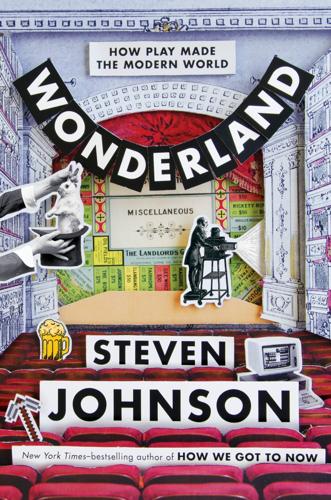
Wonderland: How Play Made the Modern World
by
Steven Johnson
Published 15 Nov 2016
Though several working prototypes were built, the machine never found a home in the French textile industry. But one of those prototypes survived long enough to find its way into the collection of the Conservatoire des Arts et Métiers, an institute formed in the early days of the French Revolution, more than a decade after Vaucanson’s death. In 1803, an ambitious inventor from Lyon named Joseph-Marie Jacquard made a pilgrimage to the conservatoire to inspect Vaucanson’s automated loom. Recognizing both the genius and the limitations of the pinned cylinder, Jacquard hit upon the idea of using a sequence of cards punched with holes to program the loom. In Jacquard’s design, small rods, each attached to an individual thread, pressed against the punch cards; if they encountered the card’s surface, the thread remained stationary.
…
The automated nature of Jacquard’s loom also made it more than twenty times faster than traditional drawlooms. “Using the Jacquard loom,” James Essinger writes, “it was possible for a skilled weaver to produce two feet of stunningly beautiful decorated silk fabric every day compared with the one inch of fabric per day that was the best that could be managed with the drawloom.” Joseph-Marie Jacquard displaying his loom The Jacquard loom, patented in 1804, stands today as one of the most significant innovations in the history of textile production. But its most important legacy lies in the world of computation. In 1839, Charles Babbage wrote a letter to an astronomer friend in Paris, inquiring about a portrait he had just encountered in London, a portrait that when viewed from across the room seemed to have been rendered in oil paints, but on closer inspection turned out to be woven entirely out of silk.
…
In 1839, Charles Babbage wrote a letter to an astronomer friend in Paris, inquiring about a portrait he had just encountered in London, a portrait that when viewed from across the room seemed to have been rendered in oil paints, but on closer inspection turned out to be woven entirely out of silk. The subject of the portrait was Joseph-Marie Jacquard himself. In his letter Babbage explained his interest in the legendary textile inventor: You are aware that the system of cards which Jacard [sic] invented are the means by which we can communicate to a very ordinary loom orders to weave any pattern that may be desired. Availing myself of the same beautiful invention I have by similar means communicated to my Calculating Engine orders to calculate any formula however complicated.

Fewer, Better Things: The Hidden Wisdom of Objects
by
Glenn Adamson
Published 6 Aug 2018
More complexity can be achieved by introducing multiple colors or multiple types of fiber, each of which gets the equivalent of its own sheet of graph paper pattern in the design process. As you may appreciate, the possibility for complication becomes enormous rather quickly. This is why the Jacquard loom, named for its French inventor, Joseph Marie Jacquard, and publicly unveiled in 1801, was so important. He devised a means for storing the pattern of each pick (again, that’s each single passage of the weft thread through the textile) into a series of punch cards, chained together and fed automatically into the loom. This system completely revolutionized the textile industry.
…
We don’t need to set up game preserves for endangered species of craft, nor do we need to turn every workshop into an R&D hub. There is a middle way, which is anchored in equal respect for all forms of material intelligence, no matter how established or novel. Once we think in these unprejudiced terms, we can see that the weaver Joseph Marie Jacquard and the coconut carver Murage Ngani Ngatho, for all of the obvious differences in their situations, had a great deal in common. Both found ways to create value through ingenious experimentation. Both dedicated themselves not just to the shaping of materials, but also to the tools that do the shaping.
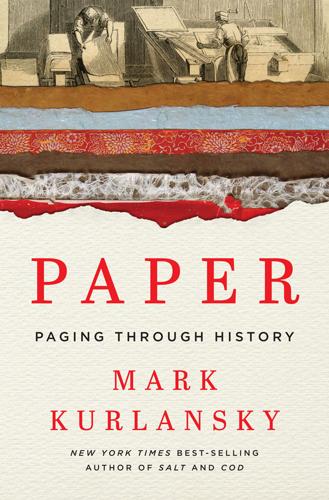
Paper: A World History
by
Mark Kurlansky
Published 3 Apr 2016
He disliked the papermakers’ guild and the papermakers, with all their rights and privileges—as did many on the management side of papermaking—and was candid about his goal of finding a way to unseat them from their perch. This was one of the first signs to the careful observer that Diderot’s promised century was not going to unfold the way he imagined. Soon weavers would be in a death struggle with Joseph-Marie Jacquard’s automatic punch-card-operated looms, another French invention put into operation in Britain. The weavers, like the paper workers, were a highly skilled and well-organized group who had won many rights. The continuous-paper-machine patent caught the interest of the Fourdrinier brothers, Henry and Sealy, papermakers who built several prototypes of the huge and complicated machine, and went bankrupt in the process.
…
The computer age does seem to have its origins in the Industrial Revolution, and Ada Lovelace was probably the first to write about a machine that could be programmed to work on any problem. But her ideas were based on those of Charles Babbage, who had built a machine, the Difference Engine, that could make calculations. Her most famous work is an 1843 treatise on the potential of Babbage’s machine. Forty years earlier, Joseph-Marie Jacquard had invented a loom that could be programmed with punch cards. Ada Lovelace was probably familiar with that machine because when the Luddites tried to smash them, her father, Lord Byron, famously spoke in the Luddites’ defense. Jacquard’s work probably also led Babbage to imagine his calculating machine, also programmable with punch cards.
…
Three years later it changes its name to The Times. 1790 Thomas Bewick becomes the most sought-after illustrator in Britain. 1798 Nicolas-Louis Robert applies for a patent for his continuous-paper machine. 1798 Artist J. M. W. Turner begins his experiments with watercolors. 1799 Alois Senefelder invents the lithograph. 1800 Lord Stanhope invents a cast iron printer. 1801 Joseph-Marie Jacquard invents the automatic loom, operated by punch cards. 1804 Bryan Donkin builds the first working Fourdrinier machine. 1809 John Dickinson patents his cylinder papermaking machine. 1810 Friedrich Koenig invents a steam-powered printer. 1811 The Luddites start smashing automatic looms in England. 1814 The Times of London uses Koenig’s steam-powered printer. 1818 Joshua Gilpin builds the first continuous-paper machine in America. 1820 More than 29 million newspapers are sold in Britain this year. 1825 Joseph Nicéphore Niépce makes the first photograph. 1830 New bleaching process makes white paper from colored rags possible. 1833 An English patent is granted for making paper from wood. 1840 William Henry Fox Talbot makes first permanent photo on paper. 1841 Ebenezer Landells starts the London satirical magazine Punch. 1843 American Richard M.

The Trouble With Billionaires
by
Linda McQuaig
Published 1 May 2013
In many ways, the story of the personal computer begins in France in the early 1800s with the invention of a superior loom for weaving silk. The intricately brocaded fabrics that were fashionable at the time could be produced by an instrument known as a drawloom, but only with extremely difficult and complex hand-weaving. Joseph Marie Jacquard, the fifth of nine children of a master weaver from Lyon, devised a loom that allowed the weaving function to be done without manual effort. The key to his invention was a series of punched cards. These were inserted into the loom, where metal rods attached to individual threads would hit against them.
…
Engelbart, who has been sadly disappointed by the commercial direction of the computer revolution, held the patent for the mouse, although he never actually received any royalties for it because he allowed it to expire in 1987, on the cusp of the desktop revolution. So if we were to present the story of the development of the personal computer as a stage play, it would be a rich and complex drama with a long list of characters. From early scenes featuring Joseph Marie Jacquard and his punched-card technology, the play would go on to include starring roles for Charles Babbage, Herman Hollerith, Thomas John Watson, J. Presper Eckert, John Mauchly, Douglas Engelbart and Bill English, with a host of other largely unidentified characters playing crucial supporting roles onstage and off.
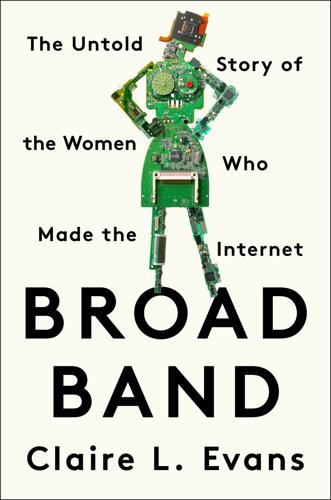
Broad Band: The Untold Story of the Women Who Made the Internet
by
Claire L. Evans
Published 6 Mar 2018
Around looms, at spinning wheels, in sewing circles, in ancient Egypt and China, and in southeastern Europe five centuries before Christianity, women have woven clothing, shelter, the signifiers of status, even currency. Like many accepted patterns, this was disrupted by the Industrial Revolution, when a French weaver, Joseph-Marie Jacquard, proposed a new way to create cloth—not by hand, but by the numbers. Unlike a traditional loom, singularly animated by its weaver’s ingenuity, Jacquard’s invention produced remarkably complex textiles from patterns punched into sequences of paper cards, reproducible and consistent beyond a margin of human error.
…
Privately, he worried that, in his sympathy for the Luddites, he might be taken as “half a frame-breaker” himself. He was, of course, not—and he was dead wrong about the spider work, too. Even as Byron made his case, Jacquard looms were producing a quality and volume of textiles unlike anything the world had ever seen. The mathematician Charles Babbage owned a portrait of Joseph-Marie Jacquard woven from thousands of silk threads using twenty-four thousand punched cards, a weaving so intricate that it was regularly mistaken for an engraving by his guests. And although the portrait was a fine possession, it was the loom itself, and its punch card programs, that really ignited Babbage’s imagination.
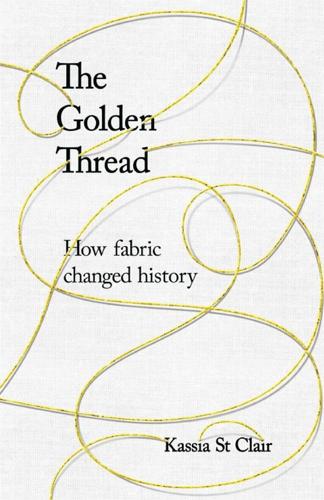
The Golden Thread: How Fabric Changed History
by
Kassia St Clair
Published 3 Oct 2018
Although early reviews have found the technology rather limited – you’re only controlling the smartphone that’s in your pocket, after all – others see such smart fabric as the wearable tech of the future.8 The name chosen for this futuristic endeavour was Project Jacquard, a name with a nineteenth-century pedigree. In 1801 Joseph Marie Jacquard invented a loom that made it possible to mass-produce textiles with complex woven patterns, something that previously had taken a great deal of skill, time and expertise to produce. His ‘Jacquard Loom’ was controlled, or programmed, by pieces of card marked with a series of holes that determined the pattern.
…
Now more commonly a thick, twilled cotton cloth usually dyed a dull, dark colour. H Heckling To split and straighten the fibres of hemp or flax for spinning. Holland Linen fabric from the province of Holland in the Netherlands. J Jacquard loom A loom fitted with a mechanism to control the weaving of figured fabrics. This mechanism was invented by Joseph Marie Jacquard from Lyons in France. Jersey Knitted goods from Jersey, especially a kind of tunic. Later used to denote fine knitted fabrics. L Loom A machine or implement on which yarn or thread is woven. Lustring A very glossy silk fabric. The name derives from the word ‘lustre’. M Mercer A person who deals in textiles, especially luxurious ones including silks and velvet.
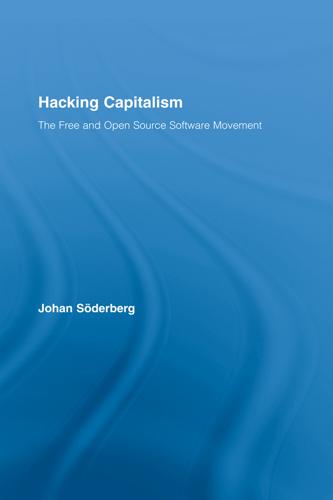
Hacking Capitalism
by
Söderberg, Johan; Söderberg, Johan;
The book is dedicated to all of you out there who make something new and interesting with it. Introduction The rise of computing, like so many other things in the modern world, could arguably be dated to the aftermath of the French Revolution. The embryo of software programs is a system of perforated cards used in the Jacquard loom and first exhibited in 1801. Joseph-Marie Jacquard’s device was the culmination of a series of inventions made during the course of the eighteenth century in the silk-weaving district of Lyon. The principal idea which he borrowed from earlier designs was the use of perforated cards to steer the loom. The movements of the machinery pushed the cards against a set of rods.
…
Play is a showcase of how labour self-organises its constituent power outside the confines of market exchanges. It is more than a little ironic, or perhaps, highly consistent with the dialectic dramaturgy of our tale, that this potential first arises in the field of computers—historically speaking the very antithesis of labour autonomy. A common thread runs through the perforated cards devised by Joseph-Marie Jacquard to deprive weavers of their craft skills, and the writings of Charles Babbage, the distinguished forerunner of modern computer science. He envisioned the world’s first computer, the Difference Engine, and incorporated Jacquard’s punched card system in his second attempt to build a computer, the Analytical Engine.

When Einstein Walked With Gödel: Excursions to the Edge of Thought
by
Jim Holt
Published 14 May 2018
Finally, the architecture of the Analytical Engine was quite like that of a modern computer: it had a “store” (memory), a “mill” (processor), and an input device for entering programs and an output device for printing results. The input device would read the programming instructions off punched cards, just as modern computers did until the late 1970s. Babbage borrowed the punched-card idea from French weaving technology; in 1804, Joseph-Marie Jacquard had invented a fully automated loom that would weave different patterns automatically depending on the sequence of punched cards fed into it. Babbage worked out his design for the Analytical Engine in the years 1836–1840, all the while trying, in vain, to get government support for its realization.
…
With Ada Lovelace dismissed from contention, one might think that Babbage merited this distinction, too, because he did write a number of programs for his unrealized computer. But computers do not exhaust the universe of programmable things. If “programming” means devising a set of coded instructions that will get an automated contraption to do your bidding, then the first great programmer was Joseph-Marie Jacquard—the Frenchman who, at the beginning of the nineteenth century, pioneered the use of punched cards to get automatic looms to weave complicated patterns in brocade. Babbage himself acknowledged Jacquard’s precedence: when he presented the concept for his Analytical Engine at the Turin conference, he brought with him a silk portrait of Jacquard that had been produced by an automatic loom programmed by no fewer than twenty-four thousand cards.
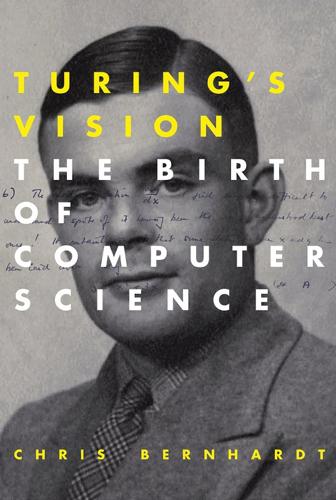
Turing's Vision: The Birth of Computer Science
by
Chris Bernhardt
Published 12 May 2016
Though the physical machines were not constructed during his lifetime, Babbage went on to design a new difference engine, Difference Engine No. 2, and the Analytical Engine.1 The Analytical Engine was far more sophisticated than the difference engines. Its most important and innovative feature was that it could be programmed using punched cards. This was an idea that he borrowed from mechanical looms. In 1801, Joseph-Marie Jacquard had designed a mechanical loom that could weave intricate patterns based on operations controlled by a sequence of punched cards. Babbage realized he could use the same idea for his machine. He had designed the programmable computer. Augusta Ada King, Countess of Lovelace, now usually known as just Ada Lovelace, was the daughter of the poet Lord Byron.
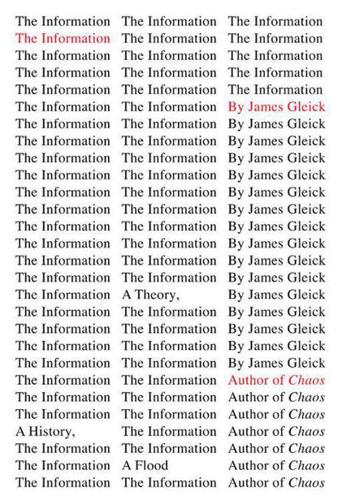
The Information: A History, a Theory, a Flood
by
James Gleick
Published 1 Mar 2011
He called this the Analytical Engine. Motivating him was a quiet awareness of the Difference Engine’s limitations: it could not, merely by adding differences, compute every sort of number or solve any mathematical problem. Inspiring him, as well, was the loom on display in the Strand, invented by Joseph-Marie Jacquard, controlled by instructions encoded and stored as holes punched in cards. What caught Babbage’s fancy was not the weaving, but rather the encoding, from one medium to another, of patterns. The patterns would appear in damask, eventually, but first were “sent to a peculiar artist.” This specialist, as he said, punches holes in a set of pasteboard cards in such a manner that when those cards are placed in a Jacquard loom, it will then weave upon its produce the exact pattern designed by the artist.♦ The notion of abstracting information away from its physical substrate required careful emphasis.
…
I Am a Mathematician (Wiener) iatroepidemics IBM, 8.1, 9.1, 12.1, 12.2, 12.3, 12.4, 13.1, 13.2, 13.3, 13.4, 14.1, 14.2 ideas, compared to biosphere, 11.1, 11.2; see also memes idiographic writing Iliad (Homer) images compressibility of memes as recording of, 14.1, 14.2 imagination, 2.1n, 4.1, 4.2, 7.1 Imitation Game (Turing), 8.1, 8.2, 8.3, 8.4 incompleteness theorem algorithmic proof of randomness and, 12.1, 12.2 chaos theory and, 12.1, 12.2 decision problem and, 7.1, 7.2 proof of, 6.1, 6.2, 6.3 significance of, 6.1, 6.2 Turing machine and indexes, 15.1, 15.2, epl.1, epl.2, epl.3 inductive reasoning Infinities, The (Banville) “Information Is Inevitably Physical” (Landauer) “Information Is Physical” (Landauer) information overload in Borges’s “Library of Babel,” 14.1 e-mail and, 15.1, 15.2 filter and search strategies to prevent, 15.1, 15.2 historical fears of, 15.1, 15.2, 15.3 human–computer comparison of effects of knowledge and, 15.1, 15.2 manifestations of, 15.1, 15.2, 15.3 meaning and, epl.1, epl.2, epl.3, epl.4 psychological studies of, 15.1, 15.2 technological progress and, prl.1, 15.1, 15.2, 15.3, 15.4 information theory attempts to add semantic counterpart to on control of redundancy in messages, 7.1, 7.2 cryptography and development in England, 8.1, 8.2 diagram of communication in, 7.1, 7.2, 7.3 genetic science and, prl.1, 10.1, 10.2, 10.3, 10.4, 10.5, 10.6, 10.7 language as possibility in, epl.1, epl.2 measurement of information in, 7.1, 7.2 message value in, 12.1-3.1 noise source in, 7.1, 7.2 origins of, prl.1, prl.2, prl.3, prl.4, 7.1; see also Mathematical Theory of Communication, The (Shannon, Weaver) physics and, prl.1, prl.2, prl.3 place of meaning in, 7.1, 7.2, 8.1, 8.2, 8.3, epl.1, epl.2 response of wider scientific community to, 8.1, 8.2, 8.3, 8.4, 8.5, 8.6, 8.7, 8.8, 8.9 response to Shannon’s initial publication, 8.1, 8.2 significance of, prl.1, prl.2, 8.1, 8.2, 8.3 in Soviet Union, 12.1, 12.2 system states in theories of psychology and, 8.1, 8.2, 8.3, 8.4, 8.5, 8.6, 8.7 see also quantum information science Internet, 11.1, 11.2, epl.1, epl.2, epl.3 It from Bit (Wheeler), prl.1, 13.1 Jacobson, Homer Jacquard, Joseph-Marie Jacquard loom, 4.1, 4.2, 4.3, 4.4, 12.1 James, William, 8.1, 8.2 János, Neumann; see John von Neumann Jaynes, Julian, 2.1, 2.2 Jennings, Allan Johannsen, Wilhelm John of Salisbury Johnson, John B. Johnson, Samuel, 3.1, 3.2, 3.3, 3.4 Johnstone, James Joncourt, Élie de, 4.1, 4.2, 4.3 Jones, Alexander Jonsson, Lars Jowett, Benjamin Judson, Horace Freeland Just, Ward Kahn, David Karinthy, Frigyes Kele language, 1.1, 1.2, 1.3 Kelvin, William Thomson, Lord Kepler, Johannes Kermode, Frank, 2.1, 2.2 Keynes, John Maynard Khwarizmi, Abu Abdullah Mohammad Ibn Musa al- Kierkegaard, Søren King, August Ada; see Lovelace, Ada King, William Klüver, Heinrich knowledge curse of omniscience, epl.1, epl.2 emergence of global consciousness, epl.1, epl.2, epl.3 epistemological theory of information information overload and, 15.1, 15.2, 15.3 limits to scientific investigation, 12.1, 12.2 in literate cultures, 2.1, 2.2, 2.3, 2.4, 2.5, 2.6 power of as product of logic requirements for communication, 12.1, 12.2, 12.3 transmission of, through human history, prl.1, prl.2 Knuth, Donald, 2.1, 2.2 Kolmogorov, Andrei Nikolaevich, 12.1, 12.2, 12.3, 12.4, 12.5, 12.6, 12.7, 12.8 Kolmogorov-Chaitin complexity, 12.1, 12.2, 12.3, 12.4 Konversations-Lexikon, epl.1 Lacroix, Sylvestre François Lagrange, Joseph Louis Landauer, Rolf, 13.1, 13.2 Landowska, Wanda Landsberg, Peter Lane, Anthony, 15.1, 15.2 language adaptations for telegraphy, 5.1, 5.2 Babbage’s work on, 4.1, 4.2 compressibility of concept of mind and for discussing language, 3.1, 3.2, 4.1 functions of, 5.1, 5.2 as infinite possibility, epl.1, epl.2 limitations of measuring redundancy in, 1.1, 1.2, 8.1, 8.2, 8.3 paradoxes of, 2.1, 2.2, 6.1, 6.2, 6.3 pattern analysis perfect redundancy in, 1.1, 1.2, 1.3, 5.1, 7.1, 7.2, 7.3, 7.4, 8.1, 8.2, 8.3, 12.1 as shared experience statistical structure of, 7.1, 7.2, 7.3, 7.4 symbolic expression of, 5.1, 5.2 technical, 3.1, 3.2 transmission capacity of Internet and, 3.1, 3.2 universal, 4.1, 6.1 see also oral culture; writing; specific language Language Instinct, The (Pinker), 3.1, 3.2 Lanier, Jaron Laplace, Pierre-Simon, 14.1, 14.2 Lardner, Dionysius, 4.1, 4.2, 4.3, 5.1, 5.2 Lasker, Edward Latin language, 3.1, 3.2, 3.3, 3.4 Lawrence Livermore Laboratory Laws of Thought, The (Boole), 5.1, 5.2 Leibniz, Gottfried Wilhelm, 3.1, 4.1, 4.2, 4.3, 6.1, 6.2, 7.1, 15.1, epl.1 Lem, Stanislaw Le Roy, Édouard Le Sage, Georges-Louis Lever, Ralph Levor, Norma, 6.1, 6.2, 6.3 Leyland numbers Li, Ming, 11.1, 11.2 liar’s paradox libraries, organization of materials in, 3.1, 3.2, 15.1 Library of Alexandria, 14.1, 14.2 “Library of Babel, The” (Borges), 14.1, 14.2, 15.1, epl.1, epl.2 Library of Congress, 7.1, 14.1, 14.2, epl.1 Licklider, J.

Paper Machines: About Cards & Catalogs, 1548-1929
by
Markus Krajewski
and
Peter Krapp
Published 18 Aug 2011
Remington & Sons Typewriter Company, spun off by gun producer Eliphalet Remington II in 1886, acquires both Library Bureau and Globe Wernicke, merging them the following year with Rand Kardex to form Remington Rand Inc.78 A department called Remington Kardex Bureau spurs the decisive advancement of the index card to an automated storage device principle whose origins refer once more to Europe, that is, to the eighteenth century and Jacques de Vaucanson as well as Joseph Marie Jacquard’s punch cards.79 After 1958, five electric-pneumatically linked Remington Rand typewriters print the paper slips of the last analog catalog of the Austrian National Library, five copies synchronized by compressed air. However, they prove inferior to the more robust and soon widely used electric typewriters of the International Business Machines Corporation, and as a result are disposed of.80 The intertwined genealogy of card index makers and typewriter manufacturers, leading to the production of the universal discrete machine, remains an American history of mergers and acquisitions.

How We Got Here: A Slightly Irreverent History of Technology and Markets
by
Andy Kessler
Published 13 Jun 2005
Stream engines would drive the looms, but the cloth that came out was one color or one thickness. The bland Brits didn’t complain, at least it was more comfortable than itchy wool. The French, on the other hand, demanded a little style, and were willing to pay for it. The son of a French silk weaver, Joseph-Marie Jacquard had a thriving business operating looms. But to meet the demands of discerning customers for interesting patterns, he needed weavers to lift or depress warp threads before each pass of the shuttle of the loom. This was painstaking work so output was slow and expensive. In 1801, Jacquard came up with an automated loom that operated with a set of punched cards.

12 Bytes: How We Got Here. Where We Might Go Next
by
Jeanette Winterson
Published 15 Mar 2021
* * * Babbage realised that the punched-cards system used on the mechanical Jacquard loom could be used to self-operate a calculating machine. No need for a crank handle. The calculating machine could also use the punched cards to store memory. This was an extraordinary insight. * * * Punched cards are stiff cards with holes in them. The Frenchman Joseph-Marie Jacquard patented a mechanism in 1804 that allowed the pattern of a piece of cloth to be expressed as a series of holes on a card. This was a genius moment of abstract intuition – closer to the quantum-mechanical patterned universe than the 3D realism of the Industrial Revolution. It makes sense that Babbage grasped its implications for computing.

The Innovators: How a Group of Inventors, Hackers, Geniuses and Geeks Created the Digital Revolution
by
Walter Isaacson
Published 6 Oct 2014
One would be in charge of adding 2 to the last number in column B, and then would hand that result to another person, who would add that result to the last number in column A, thus generating the next number in the sequence of squares. Replica of the Difference Engine. Replica of the Analytical Engine. The Jacquard loom. Silk portrait of Joseph-Marie Jacquard (1752–1834) woven by a Jacquard loom. Babbage devised a way to mechanize this process, and he named it the Difference Engine. It could tabulate any polynomial function and provide a digital method for approximating the solution to differential equations. How did it work? The Difference Engine used vertical shafts with disks that could be turned to any numeral.
…
Babbage had combined innovations that had cropped up in other fields, a trick of many great inventors. He had originally used a metal drum that was studded with spikes to control how the shafts would turn. But then he studied, as Ada had, the automated loom invented in 1801 by a Frenchman named Joseph-Marie Jacquard, which transformed the silk-weaving industry. Looms create a pattern by using hooks to lift selected warp threads, and then a rod pushes a woof thread underneath. Jacquard invented a method of using cards with holes punched in them to control this process. The holes determined which hooks and rods would be activated for each pass of the weave, thus automating the creation of intricate patterns.

The Journey of Humanity: The Origins of Wealth and Inequality
by
Oded Galor
Published 22 Mar 2022
For example, the Scribes Guild in late-fifteenth-century Paris managed to bar the entry of the city’s first printing press for nearly twenty years.[9] In 1561, the Red-Metal Turners Guild of Nuremberg pressured the city council to deter a local coppersmith by the name of Hans Spaichi, who had invented a superior slide rest lathe, from spreading his invention, ultimately threatening to jail anyone who dared to adopt his new production techniques.[10] In 1579, the Danzig city council ordered the inventor of a new ribbon loom, which threatened traditional ribbon weavers, to be drowned in secret.[11] And in the early nineteenth century, an angry mob of the Weavers Guild in France protested against Joseph-Marie Jacquard (1752–1834), the inventor of an innovative loom operated using a series of punched cards – technology that would later inspire the programming of the first computers. In contrast, the British guilds were less powerful than their European counterparts, which may have been partly a consequence of the rapid and largely unregulated rebuilding of the City of London in the aftermath of the Great Fire of 1666, as well as rapid market expansion elsewhere, leading to a greater demand for craftsmen than the guilds could supply.

Artificial Unintelligence: How Computers Misunderstand the World
by
Meredith Broussard
Published 19 Apr 2018
This design was used to build calculating machines for the next 275 years.12 Leibniz had no time for mere arithmetic; he had more important math to do. After he invented his machine, he famously said: “It is beneath the dignity of excellent men to waste their time in calculation when any peasant could do the work just as accurately with the aid of a machine.” When Joseph Marie Jacquard released the punch-card loom in 1801, it got mathematicians thinking differently about machines that might help calculate. Jacquard’s loom ran on binary logic: a hole in the card meant binary one; no hole meant binary zero. The machine wove its intricate patterns based on whether there was a hole or not.

Shady Characters: The Secret Life of Punctuation, Symbols, and Other Typographical Marks
by
Keith Houston
Published 23 Sep 2013
Though they had been integral to the Latin scribe’s art, abbreviations in modern languages were fewer in number and were often discouraged altogether in running text; a drive to reduce the number of characters, or “sorts,” required of a typeface caused a decline in ligatures and letter variants, and, other than within its German heartland, by the end of the nineteenth century blackletter had largely retreated to niche applications.37 At the same time, the rules of hyphenation themselves grew ever more complex: published toward the end of the era of manual typesetting, the 1906 Chicago Manual of Style contained no fewer than fourteen separate rules for word division.38 In other words, it was getting harder to hyphenate and justify lines, and the archaic composing stick was not helping. The race to automate the composition process finally came to fruition in the closing decades of the Victorian era. Baroque mechanical contraptions had invaded every corner of nineteenth century life, from factories to homes: Joseph-Marie Jacquard’s punch card–driven loom of 1801 made it possible to mass produce intricate fabric weaves; Charles Babbage’s mathematical engines of the 1820s and ’30s pioneered the automated solution of mathematical formulae, and even a visit to the bathroom was enlivened by the appearance of the flushing toilets popularized by one Thomas Crapper.39 The ossified printing industry was long overdue for a similar shake-up.
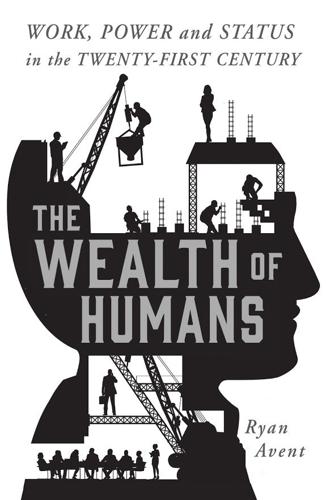
The Wealth of Humans: Work, Power, and Status in the Twenty-First Century
by
Ryan Avent
Published 20 Sep 2016
And computing is a fantastically powerful general-purpose technology. Engineers tinkered with computing machines for millennia, but the pace of advance in mechanical computing truly picked up in the nineteenth century. Early computing innovation found its way into a loom invented by a Frenchman called Joseph Marie Jacquard, which used punch cards to ‘programme’ the loom to produce particular patterns in the fabric. In the early twentieth century, the vacuum tube (a light-bulb-like device in which an electrical current is transmitted from one electrode to another) became the guts of early electronic computers.

In Our Own Image: Savior or Destroyer? The History and Future of Artificial Intelligence
by
George Zarkadakis
Published 7 Mar 2016
AD 50: Hero of Alexandria designs first mechanical automata. 1275: Ramon Lull invents Ars Magna, a logical machine. 1637: Descartes declares cogito ergo sum (‘I think therefore I am’). 1642: Blaise Pascal invents the Pascaline, a mechanical cal-culator. 1726: Jonathan Swift publishes Gulliver’s Travels, which includes the description of a machine that can write any book. 1801: Joseph Marie Jacquard invents a textiles loom that uses punched cards. 1811: Luddite movement in Great Britain against the auto-mation of manual jobs. 1818: Mary Shelley publishes Frankenstein. 1835: Joseph Henry invents the electronic relay that allows electrical automation and switching. 1842: Charles Babbage lectures at the University of Turin, where he describes the Analytical Engine. 1843: Ada Lovelace writes the first computer program. 1847: George Boole invents symbolic and binary logic. 1876: Alexander Graham Bell invents the telephone. 1879: Thomas Edison invents the light bulb. 1879: Gottlob Frege invents predicate logic and calculus. 1910: Bertrand Russell and Alfred North Whitehead publish Principia Mathematica. 1917: Karel Capek coins the term ‘robot’ in his play R.U.R. 1921: Ludwig Wittgenstein publishes Tractatus Logico-philosopicus. 1931: Kurt Gödel publishes The Incompleteness Theorem. 1937: Alan Turing invents the ‘Turing machine’. 1938: Claude Shannon demonstrates that symbolic logic can be implemented using electronic relays. 1941: Konrad Zuse constructs Z3, the first Turing-complete computer. 1942: Alan Turing and Claude Shannon work together at Bell Labs. 1943: Warren McCulloch and Walter Pitts demonstrate the equivalence between electronics and neurons. 1943: IBM funds the construction of Harvard Mark 1, the first program-controlled calculator. 1943: Charles Wynn-Williams and others create the computer Colossus at Bletchley Park. 1945: John von Neumann suggests a computer architecture whereby programs are stored in the memory. 1946: ENIAC, the first electronic general-purpose computer, is built. 1947: Invention of the transistor at Bell Labs. 1948: Norbert Wiener publishes Cybernetics. 1950: Alan Turing proposes the ‘Turing Test’. 1950: Isaac Asimov publishes I, Robot. 1952: Alan Turing commits suicide with cyanide-laced apple. 1952: Herman Carr produces the first one-dimensional MRI image. 1953: Claude Shannon hires Marvin Minsky and John McCarthy at Bell Labs. 1953: Ludwig Wittgenstein’s Philosophical Investigations pub-lished in German (two years after his death). 1956: The Dartmouth conference; the term ‘Artificial Intel-ligence’ is coined by John McCarthy. 1957: Allen Newell and Herbert Simon build the ‘General Problem Solver’. 1958: John McCarthy creates LISP programming language. 1959: John McCarthy and Marvin Minsky establish AI lab at MIT. 1963: The US government awards $2.2 million to AI lab at MIT for machine-aided cognition. 1965: Hubert Dreyfus argues against the possibility of Artificial Intelligence. 1969: Stanley Kubrick introduces HAL in the film 2001: A Space Odyssey. 1971: Leon Chua envisions the memristor. 1972: Alain Colmerauer develops Prolog programming language. 1973: The Lighthill report influences the British government to abandon research in AI. 1976: Hans Moravec builds the ‘Stanford Cart’, the first auto-nomous vehicle.
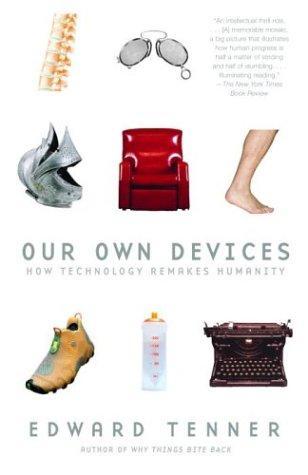
Our Own Devices: How Technology Remakes Humanity
by
Edward Tenner
Published 8 Jun 2004
Most of these devices, though, were intended for taverns, dance halls, or street performances rather than bourgeois homes.19 Nineteenth-century automation promoted new devices and ambitions. Beginning in 1815, the silk mills of Lyons and other cities were using strings of cards with punched holes to reproduce designs on special looms developed by the manufacturer Joseph Marie Jacquard. This was one of the earliest forms of automatic process control in industry Pianos, organs, and other keyboard instruments were obvious candidates for more advanced systems for reproducing recorded notes. The first automatic pianos were rudimentary instruments for places of cheap popular entertainment.
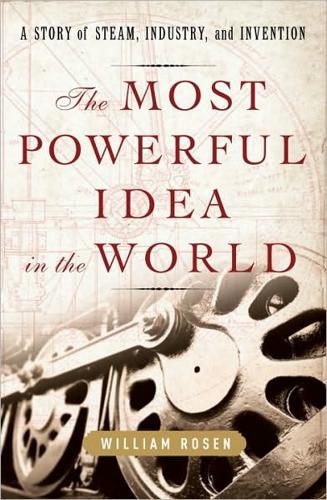
The Most Powerful Idea in the World: A Story of Steam, Industry, and Invention
by
William Rosen
Published 31 May 2010
Between 1740 and 1780,36 the French inclination to reward inventors not by enforcing a natural right but by the grant of pensions and prizes resulted in the award of nearly 7 million livres—approximately $600 million today*—to inventors of largely forgotten devices, but Claude-François Jouffroy d’Abbans (inventor of one of the first working steamboats), Barthélemy Thimonnier (creator of the first sewing machine), and Aimé Argand (a partner of Boulton and friend of Watt whose oil lamp became the world’s standard) all died penniless. Other than Joseph-Marie Jacquard, the creator of the eponymous loom, and perhaps the Montgolfiers, the French did not lionize their inventors.37 This didn’t mean they didn’t understand the strategic importance of technology. Carnot himself wrote, “to deprive England of her steam engines,38 you would deprive her of both coal and iron; you would cut off the sources of all her wealth, totally destroy her means of prosperity, and reduce this nation of huge power to insignificance.

Code: The Hidden Language of Computer Hardware and Software
by
Charles Petzold
Published 28 Sep 1999
Successful mechanical calculators that real people could use weren't available until the late nineteenth century. One curious invention that was to have a later influence on the history of computing—as well as a profound influence on the textile industry—was an automated loom developed by Joseph Marie Jacquard (1752–1834). The Jacquard loom (circa 1801) used metal cards with holes punched in them (much like those of a player piano) to control the weaving of patterns in fabrics. Jacquard's own tour de force was a self-portrait in black and white silk that required about 10,000 cards. In the eighteenth century (and indeed up to the 1940s), a computer was a person who calculated numbers for hire.
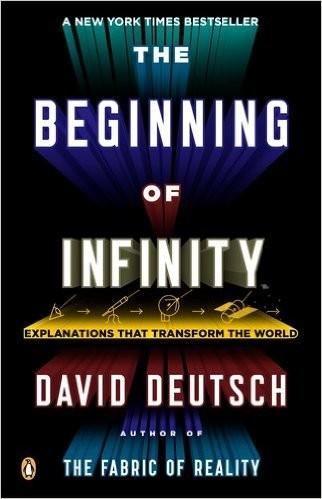
The Beginning of Infinity: Explanations That Transform the World
by
David Deutsch
Published 30 Jun 2011
Here we see a transition that is typical of the jump to universality: before the jump, one has to make specialized objects for each document to be printed; after the jump, one customizes (or specializes, or programs) a universal object – in this case a printing press with movable type. Similarly, in 1801 Joseph Marie Jacquard invented a general-purpose silk-weaving machine now known as the Jacquard loom. Instead of having to control manually each row of stitches in each individual bolt of patterned silk, one could program an arbitrary pattern on punched cards which would instruct the machine to weave that pattern any number of times.

Power and Progress: Our Thousand-Year Struggle Over Technology and Prosperity
by
Daron Acemoglu
and
Simon Johnson
Published 15 May 2023
Clash over Automation and Wages Concerns about technological unemployment voiced by John Maynard Keynes, discussed in Chapter 1, were perhaps even more relevant in the decades following World War II. Machine tools continued to improve, and striking advances in numerically controlled machinery built on and perfected the ideas that dated back to Jacquard’s loom. Designed by Joseph-Marie Jacquard in 1804, this loom was one of the most important weaving automation devices of the nineteenth century, performing tasks that even skilled weavers found challenging. Its breakthrough was conceptualizing and designing a machine that wove fabric according to the designs entered via a set of punch cards.

Energy and Civilization: A History
by
Vaclav Smil
Published 11 May 2017
By 1500 more than 40,000 different books or editions had been published in Western Europe in more than 15 million copies (Johnson 1973). The introduction of detailed copper engraving during the sixteenth century and the contemporaneous development of various map projections were other notable early advances. Another outstanding innovation in this class was a punched card device invented by Joseph Marie Jacquard (1752–1834) in 1801 to control loom operations. Before 1900 punched cards were employed on Herman Hollerith’s (1860–1929) machines used to process census data (Lubar 1992). After 1940, punched input controlled first electromechanical and then electronic computers, all now supplanted by electronic data storage.
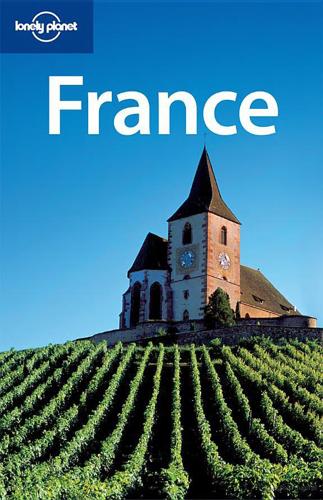
France (Lonely Planet, 8th Edition)
by
Nicola Williams
Published 14 Oct 2010
Boarders and bladers buzz around the fountains of place Louis Pradel, surveyed by the Homme de la Liberté (Man of Freedom) on roller skates, sculpted from scrap metal by Marseille-born César (1921–98). West of place des Terreaux, well-known Lyonnais peer out from the seven-storey Fresque des Lyonnais (Map; cnr rue de la Martinière & quai de la Pêcherie, 1er; Hôtel de Ville), a mural featuring loom inventor Joseph-Marie Jacquard (1752–1834), Renaissance poet Maurice Scève (c 1499–c 1560), superstar chef Paul Bocuse and the yellow-haired Little Prince, created by Lyon-born author Antoine de St-Exupéry (1900–44). South along the quay, inspired contemporary art installations fill the white space of La BF15 ( 04 78 28 66 63; www.labf15.org; 11 quai de la Pêcherie, 1er; Bellecour; admission free; 2-7pm Wed-Sat), a cutting-edge riverside art gallery.

Lonely Planet France
by
Lonely Planet Publications
Published 31 Mar 2013
On its northern side, boarders and bladers buzz around the fountains of place Louis Pradel , surveyed by the Homme de la Liberté Offline map Google map (Man of Freedom) on roller skates, sculpted from scrap metal by Marseille-born César. Fresque des Lyonnais MURAL Offline map Google map (cnr rue de la Martinière & quai de la Pêcherie, 1er; Hôtel de Ville) Well-known Lyonnais peer out from this seven-storey mural, including loom inventor Joseph-Marie Jacquard (1752–1834), Renaissance poet Maurice Scève (c 1499–1560), superstar chef Paul Bocuse (b 1926), puppet Guignol, and the yellow-haired Little Prince, created by author/aviator Antoine de St-Exupéry (1900–44). Musée des Tissus SILK MUSEUM (www.musee-des-tissus.com; 34 rue de la Charité, 2e; adult/child €10/7.50, after 4pm €8/5.50; 10am-5.30pm Tue-Sun; Ampère) Extraordinary Lyonnais and international silks are showcased here.
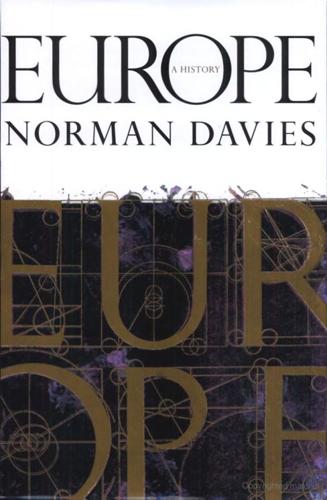
Europe: A History
by
Norman Davies
Published 1 Jan 1996
Machines, equally, which had to be made of hardened steel, could not be built in quantity unless the production of iron and steel could be expanded. This was achieved through a series of improvements, including those introduced at the Carron ironworks in Scotland (1760) and Henry Cort’s patents for the puddling and rolling of steel (1783–4). JACQUARD IN 1804 Joseph-Marie Jacquard (1752–1834), textile engineer of Lyons, perfected a loom which could weave cloth into any number of predetermined patterns, using sets of punched cards to control woof and shuttle. In textile history, Jacquard’s loom was a major advance on the earlier inventions of Arkwright, Hargreaves, and Crompton.

Artificial Intelligence: A Modern Approach
by
Stuart Russell
and
Peter Norvig
Published 14 Jul 2019
Although it is not yet practical, quantum computing holds out the promise of far greater accelerations for some important subclasses of AI algorithms. Of course, there were calculating devices before the electronic computer. The earliest automated machines, dating from the 17th century, were discussed on page 24. The first programmable machine was a loom, devised in 1805 by Joseph Marie Jacquard (1752–1834), that used punched cards to store instructions for the pattern to be woven. In the mid-19th century, Charles Babbage (1792–1871) designed two computing machines, neither of which he completed. The Difference Engine was intended to compute mathematical tables for engineering and scientific projects.